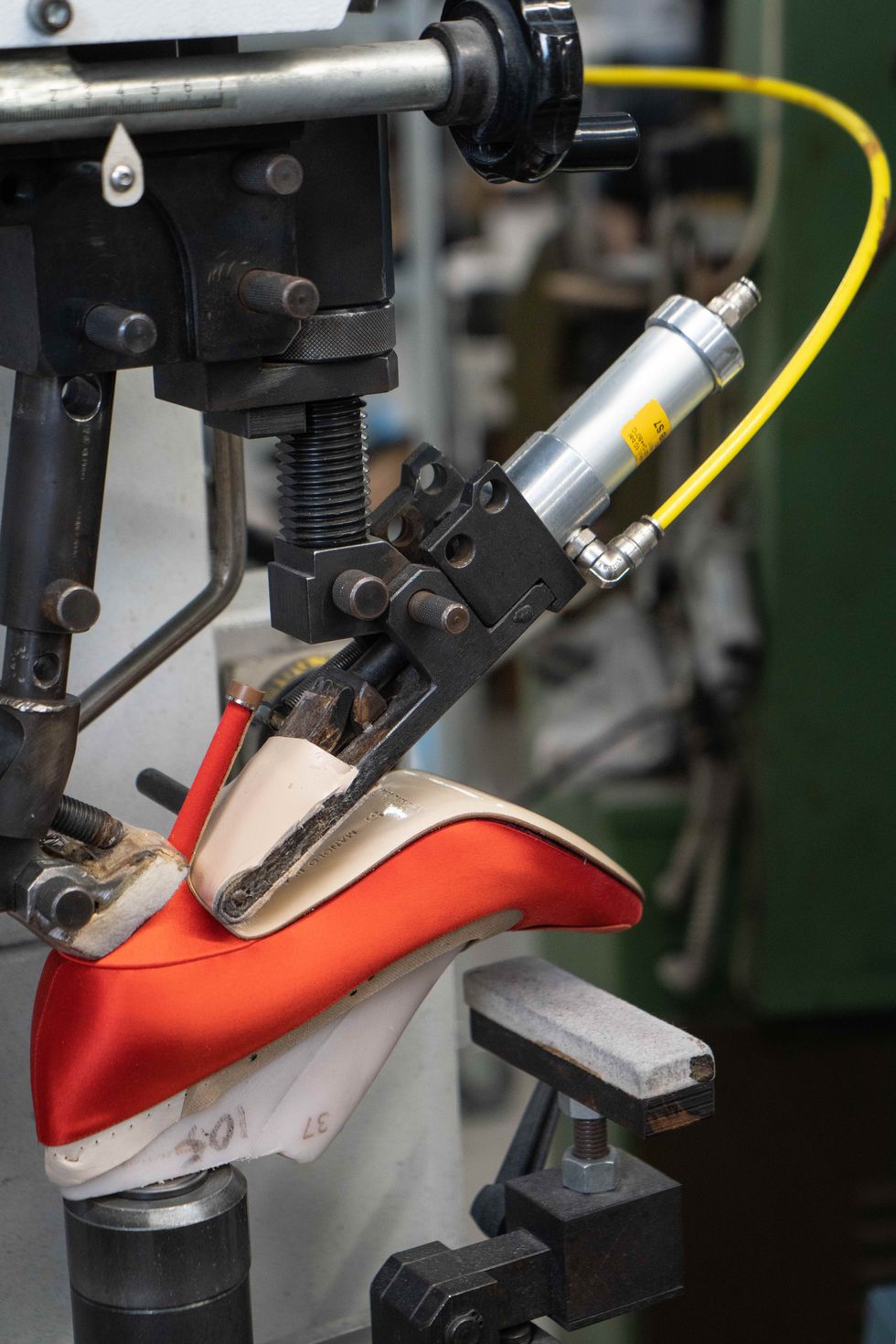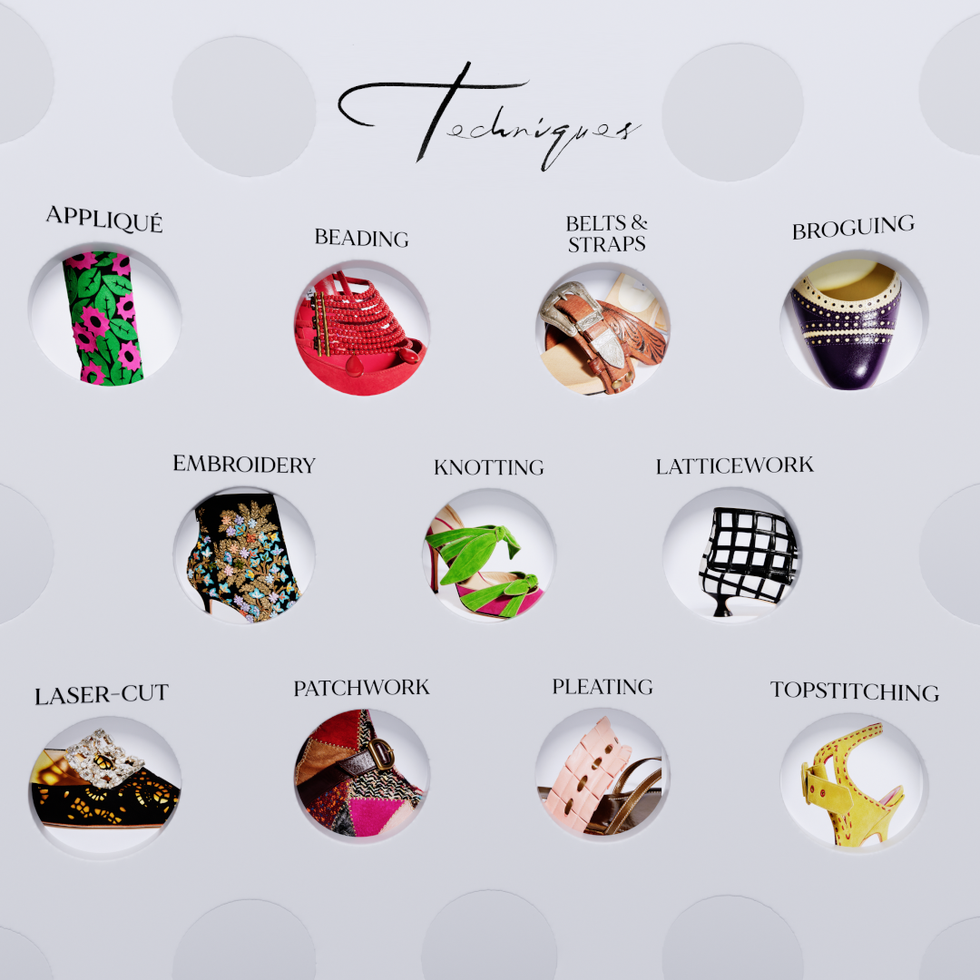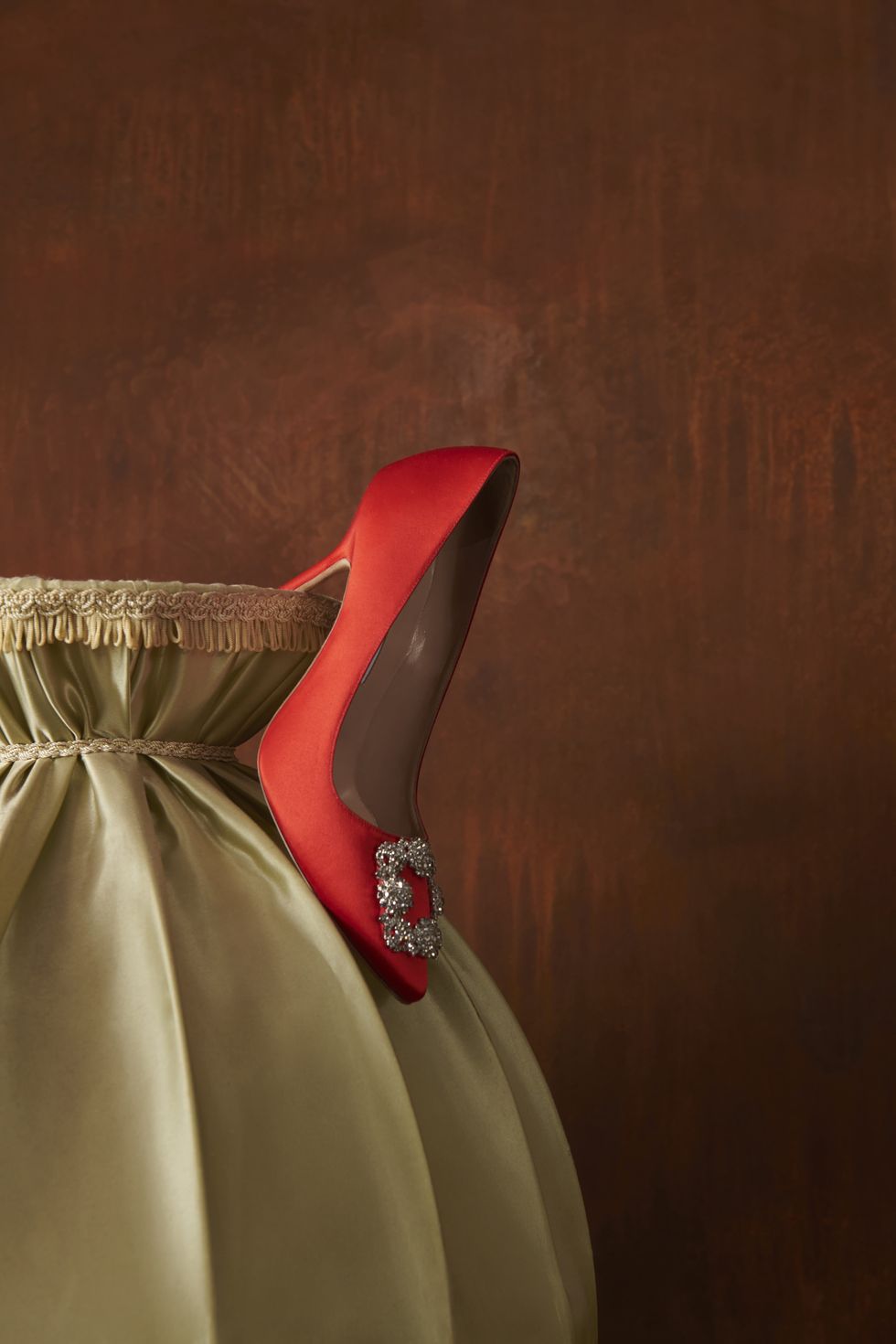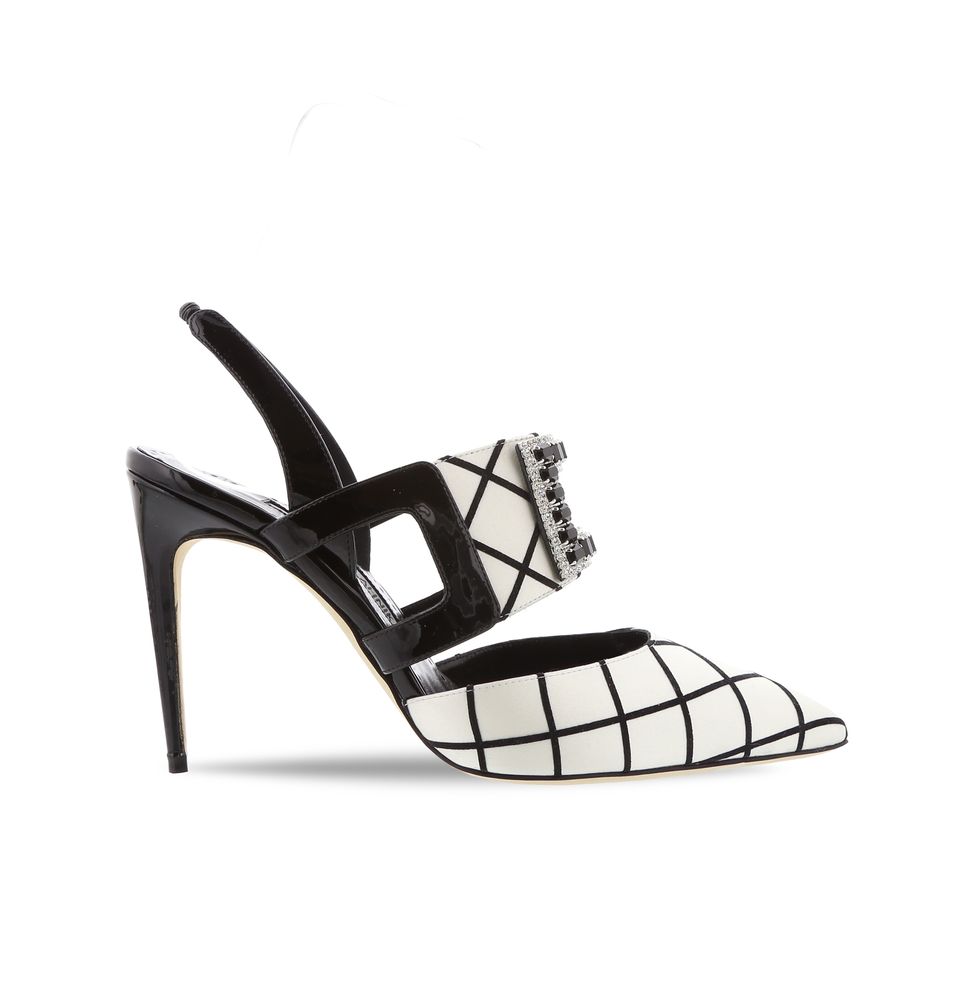In 2021, Manolo Blahnik introduced a virtual archive on its website where you can freely explore the world of the luxury shoemaker, from the eponymous designer’s first-ever silhouette to his muses and inspiration throughout the decades. And today, the brand adds a new room—The Craft Room—which showcases the incredible craftsmanship that goes into each covetable pair (including the Carrie Bradshaw-beloved Hangisi). Not only does it offer an unparalleled look into the world of fine shoemaking, with eight separate rooms dedicated to specific parts of the shoemaking journey—but it’s a celebration of all things Manolo, from its custom processes to the signature lace and buckles.
To properly unveil the new venture, Manolo Blahnik hosted an exclusive trip to its factory in Vigevano, Italy, bringing to life the journey from sketch to shoe. In Milan, ELLE had the privilege of visiting some of Blahnik’s favorite places, discovered where he finds inspiration for his collections, and even experienced a day in the factory to watch the full construction process and artisans at work firsthand. Below, the veteran founder discusses why he wanted to bring The Craft Room to life digitally, his muses, and more.
What prompted you to put The Craft Room online? What do you want customers to experience when they see it?
The whole experience is a big thank you to the artisans that I work with in the factories. I work so incredibly closely with all the wonderful artisans, and have done for almost 35 years. Craftsmanship is in their blood, passed down over generations. The Craft Room celebrates their work, and I hope it showcases that I would be nowhere without their magic hands. Also, the fact that it is online means anyone is able to see it from anywhere in the world. How exciting!
When it comes to designing a new shoe, where does the process begin? Are there specific inspirations you draw from, or stories you want to tell?
For me, everything starts with a sketch. I need to get it on paper first before anything else happens. I communicate through drawing. The next stage is speaking to the artisans in the factories so they can begin to build the shoe. The team there knows exactly what I am thinking, and strives to bring all my creations to life. Even with the most intricate and embellished designs, they are always pushing boundaries to ensure complete perfection and attention to detail. My inspiration comes from anywhere and everywhere! These days, I spend a lot of time in nature, and find I get a lot of inspiration from my surroundings.
The archive takes us through 50 years of design. How has your craftsmanship and process evolved over time, and what about that evolution are you most proud of?
My process has not changed at all! The sketch still comes first. I always carry my pens and paper with me so that when inspiration comes, I am always ready. Or else I forget it and the shoe is gone! I have been working with the artisans for so long, it’s like we have a secret language—they feel like family. I am so proud that we have been able to put family first in our business. We are a family that makes beautiful things that we hope make people smile. That’s the most important thing for me.
How instrumental is fabric selection and color in that process? Where and how exactly does that come into play?
It is extremely important. Once we have decided on the shape and how the shoe will be made, we look into fabric and colors. Sometimes, the fabric and colors are so clear in my mind that the shoe must be made exactly how I envision it. Other times, the shoe needs some experimentation, some trial and error. Some fabrics will work, and others will not. When we see the right fabric and the right color for the right shoe, we know immediately—it’s a gut feeling. There is a collective gasp with the artisans!
You have many muses. How would you define a Manolo muse? Who is the woman you have in mind when you design, and what does she want from her shoes?
There is not one type of Manolo muse, so I find it hard to define. Tina Chow was a muse of mine for so long, and I miss her dearly. The same with Anna Piaggi and Isabella Blow. I have so much to thank Diana Vreeland for. All of these women had the most extraordinary style, and that is something all of my muses seem to have in common. I simply love designing for beautiful women who have an enriched life.
You recently started using a water-based glue in the assembly process. Are there other sustainability goals you are hoping to achieve in the future?
We don’t call it “sustainability” because I feel sustainability is misunderstood. It’s binary—you either are, or you are not. We use the term “responsibility” because it is a journey. There is a consistent, continuous, growing roadmap that we are on, looking at how we can improve and move forward. It’s a more realistic approach. We’re on that journey. We have a lot to do, but have had great success so far, and we are constantly striving to be better.
This interview has been edited and condensed for clarity.
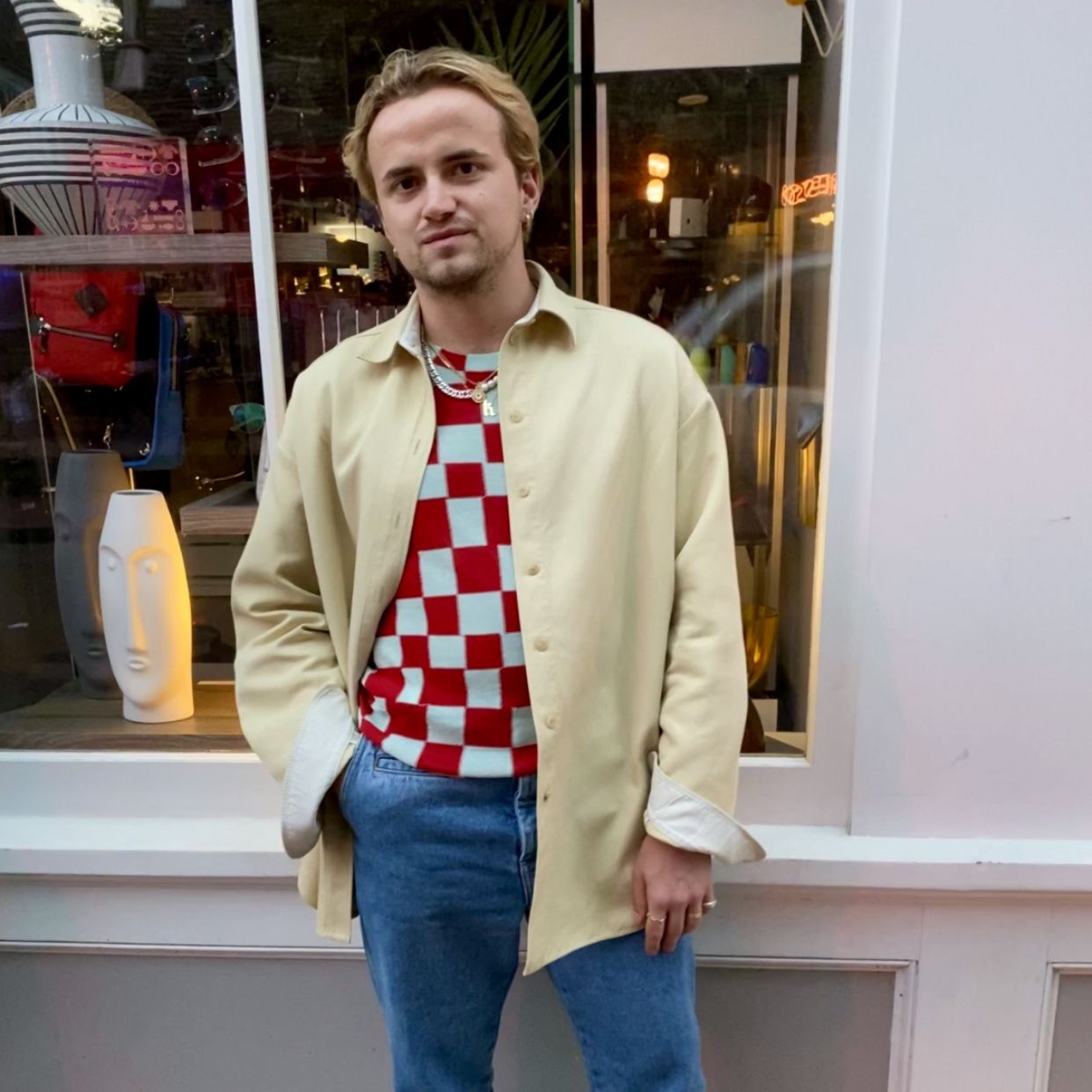
Kevin LeBlanc is the Fashion Associate at ELLE Magazine. He covers fashion news, trends, and anything to do with Robyn Rihanna Fenty.

